15 Iconic 1940 Outfits That Define Wartime-Era Fashion

The 1940s were defined by war, resilience, and ingenuity—reflected clearly in the clothing of the time. With rationing in full effect, outfits prioritized durability and utility, yet designers still managed to capture grace and structure. Whether in the factory or the city, people dressed with intent, often reworking simple materials into practical yet refined silhouettes. These looks shaped the wartime aesthetic and remain timeless inspirations today.
1. Utility Dress with Puffed Sleeves and Belted Waist

A staple for women during wartime, utility dresses were simple yet flattering. Typically made from minimal fabric due to rationing, they featured modest necklines, structured bodices, and puffed sleeves. The belted waist helped maintain a feminine silhouette, and they came in muted tones like navy, grey, or olive.
Why it works: It embodies wartime practicality without sacrificing charm, offering a strong yet soft look ideal for everyday wear.
2. Victory Suit with Pencil Skirt and Shoulder Pads
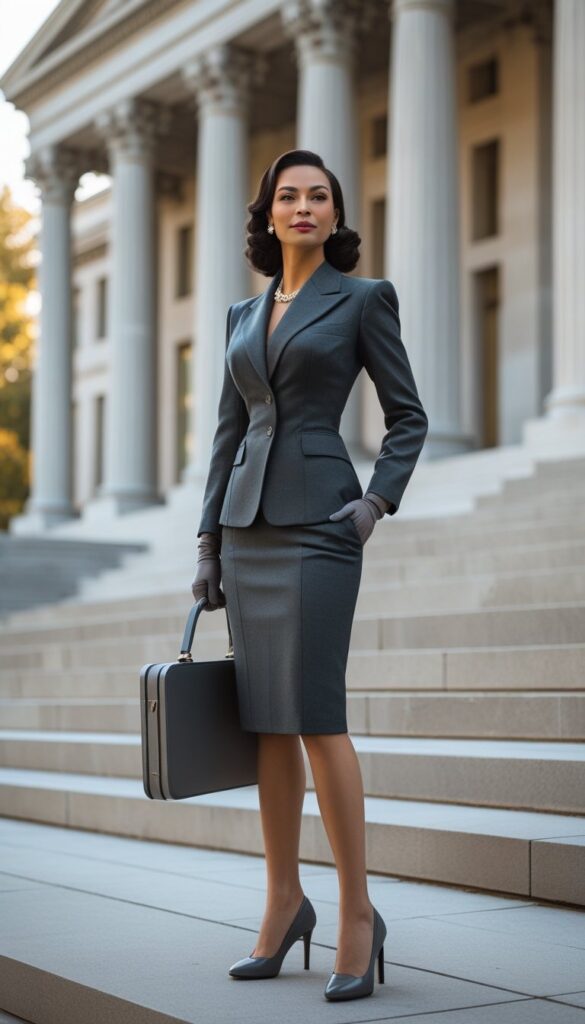
The Victory suit became a wardrobe essential for working women. It consisted of a sharply tailored jacket with broad shoulders, paired with a high-waisted pencil skirt. Designed for professionalism and adaptability, the suit symbolized women’s evolving roles during WWII.
Why it works: The structured silhouette exudes confidence and authority while remaining feminine and functional.
Also Read:17 Stylish Outfit Ideas Inspired by 1950s Fashion for Black
3. Tea Dress with Floral Print and Modest Neckline
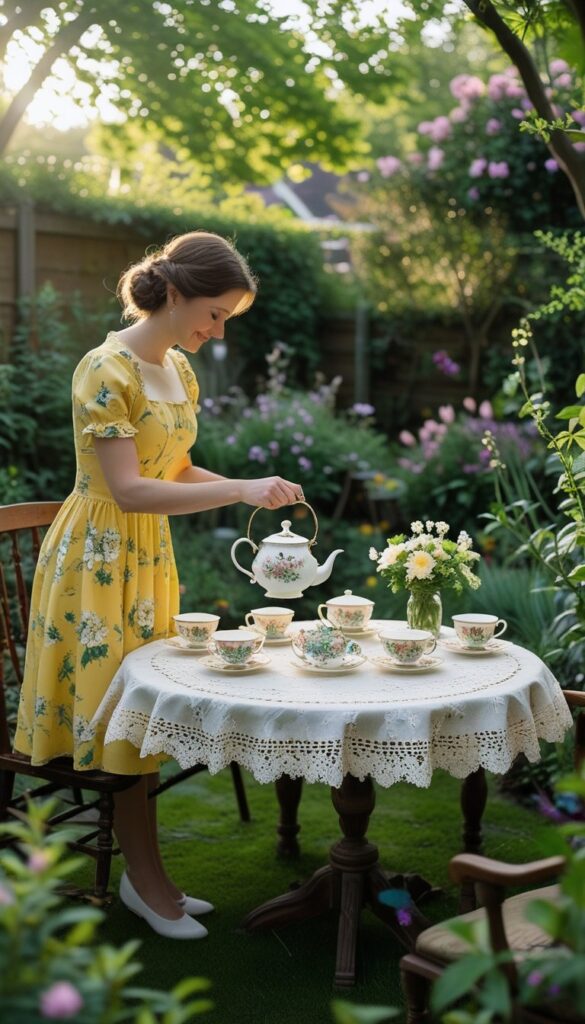
Tea dresses remained popular during the 1940s for casual and semi-formal gatherings. They were often mid-length with slightly flared skirts and came in cheerful floral prints. Despite fabric limitations, these dresses offered softness and lightness during dark times.
Why it works: It brings color and comfort into a restrained era, balancing modesty with vintage charm.
4. Wide-Leg Trousers with Tucked Blouse and Headscarf
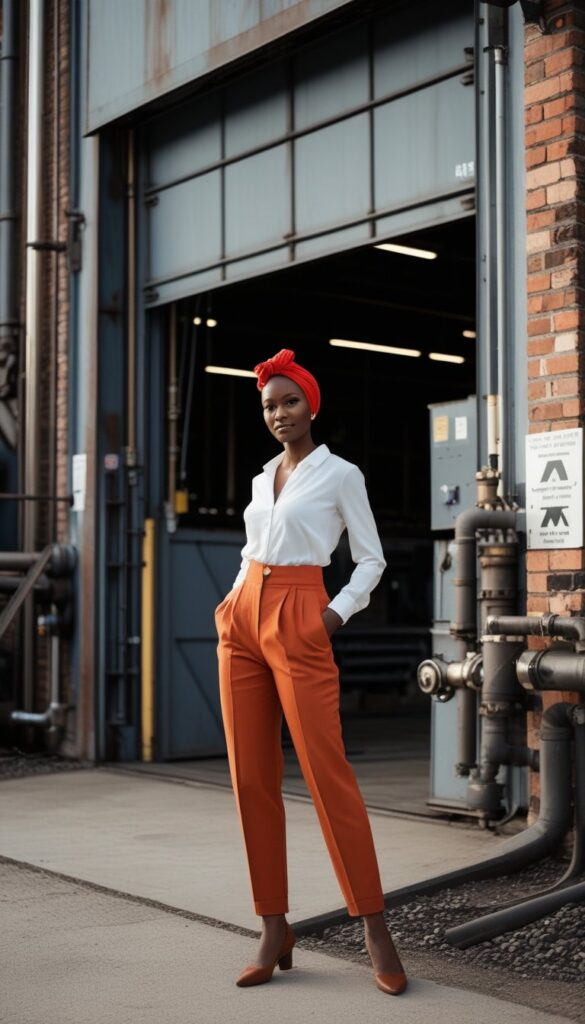
Inspired by the factory uniforms of working women, wide-leg trousers were both practical and liberating. Paired with a tucked-in blouse and knotted headscarf, the outfit allowed for mobility and strength while still looking sharp and intentional.
Why it works: It symbolizes empowerment and functionality, breaking from traditional skirts without compromising style.
5. Trench Coat Over Day Dress with Low Heels
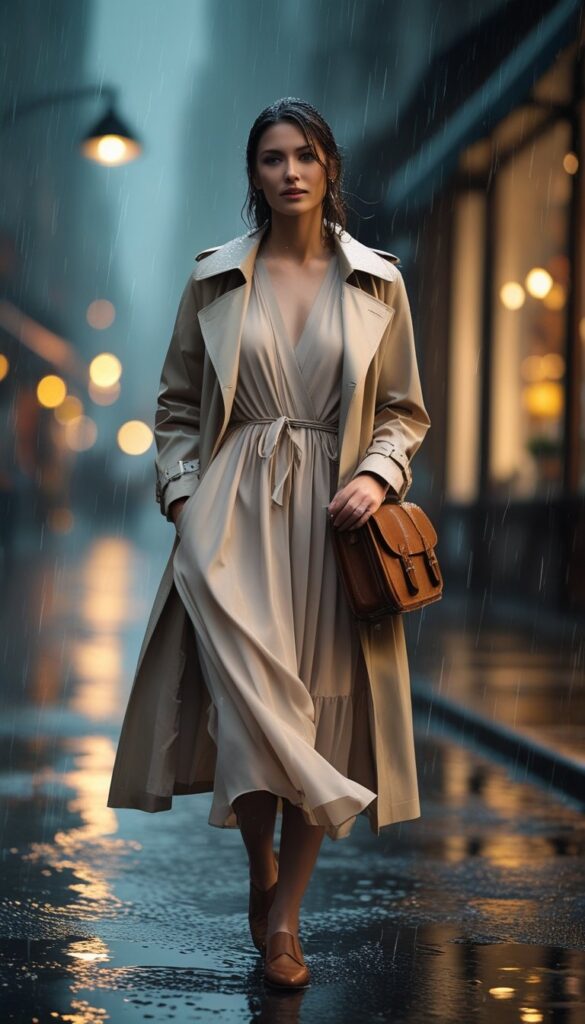
A classic trench coat was a must-have during the 1940s, especially for transitional weather. Worn over a utility or day dress, it added structure and sophistication. Neutral tones like beige or olive kept it versatile for both casual and more formal occasions.
Why it works: It layers practicality and elegance, elevating simple outfits into timeless ensembles.
6. Knit Sweater with A-Line Skirt and Brogues
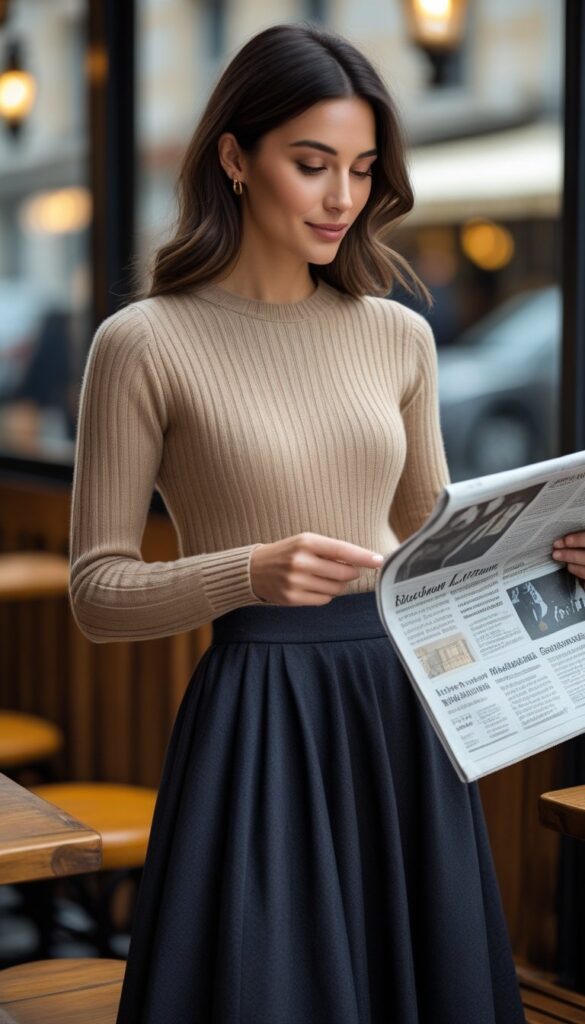
During the 1940s, knit sweaters became essential due to wool rationing and the need for versatile layering. Paired with an A-line skirt, the look was cozy yet composed. Neutral or earthy tones were common, reflecting the subdued palette of the era. Brogues or oxford shoes completed the outfit with practical polish.
Why it works: It offers warmth, simplicity, and refined balance—perfect for wartime modesty without appearing too austere.
7. Shirtwaist Dress with Buttons and Rolled Sleeves
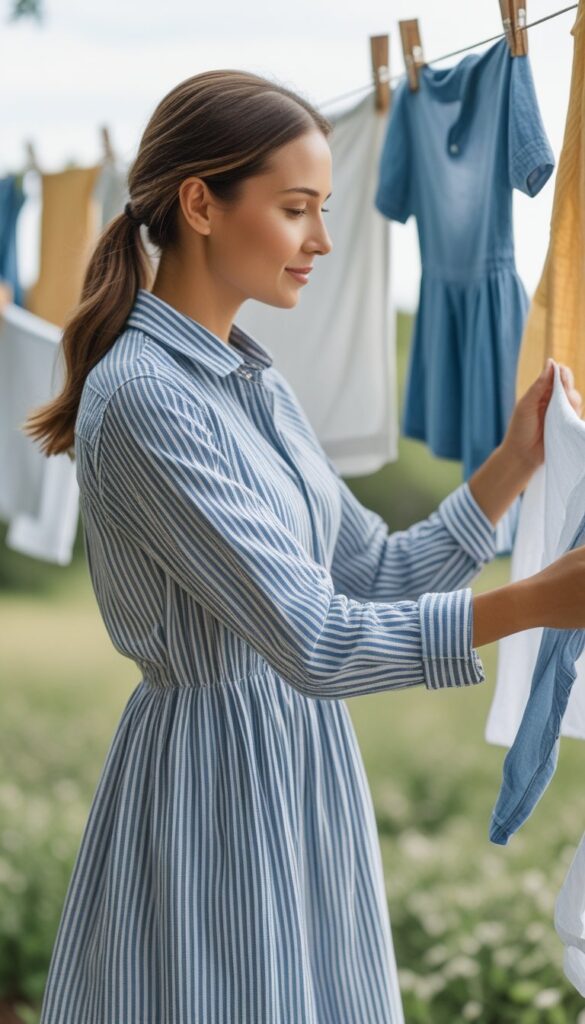
The shirtwaist dress was an everyday staple that blended utility with femininity. Featuring a button-down bodice, collar, and often a matching belt, it was easy to move in and flattering on many body types. Rolled sleeves and practical fabrics made it ideal for both home and work.
Why it works: Its clean, structured design creates a no-fuss silhouette that’s timeless and easy to replicate.
8. Civilian Uniform-Inspired Outfit with Structured Jacket
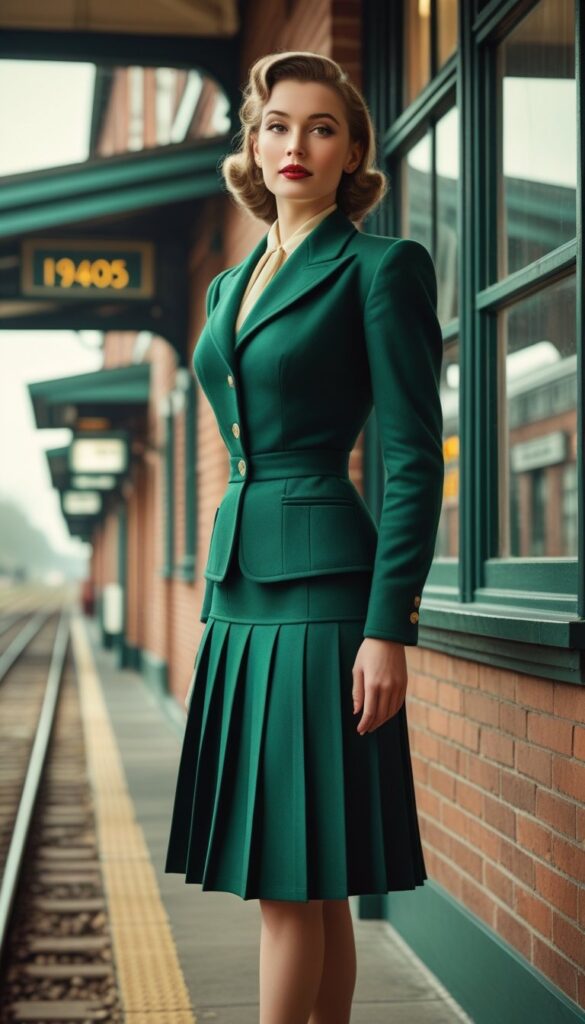
Inspired by military cuts, women’s civilian clothing often included structured jackets with brass buttons and epaulets. These jackets were worn over pleated skirts or tailored slacks, mimicking military precision in a civilian setting.
Why it works: It channels strength and national pride while maintaining day-to-day functionality.
Also Read:20 Bold & Iconic 1980s Fashion Outfits That Defined the
9. Collared Blouse with High-Waisted Slacks and Loafers
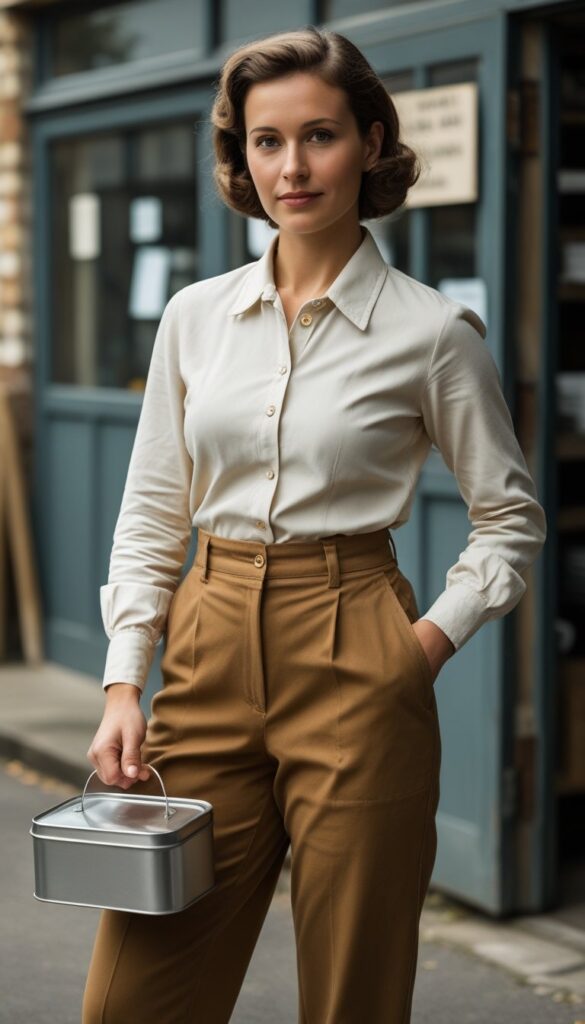
This gender-neutral outfit was favored by both women in factories and men off duty. A crisp collared blouse tucked into high-waisted slacks offered freedom of movement. It was often paired with loafers or simple lace-up shoes, reflecting the need for functionality.
Why it works: The outfit blends comfort and clean lines, symbolizing changing gender roles and utility-driven fashion.
10. Cable Knit Cardigan with Midi Skirt and Hair Rollers
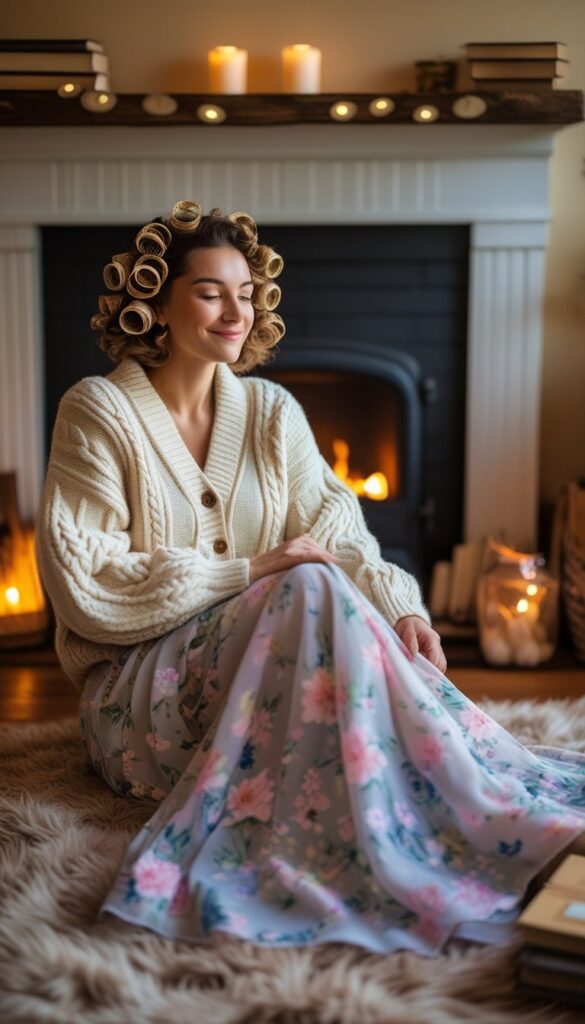
Cardigans were popular layering pieces, especially in colder months or indoors. A chunky cable knit cardigan worn over a blouse and midi skirt created a warm, approachable look. Hair set in soft rollers gave a casual, lived-in feel without losing polish.
Why it works: It captures the domestic essence of the era while offering visual texture and cozy appeal.
11. Tea Dress with Peter Pan Collar and Low Heels
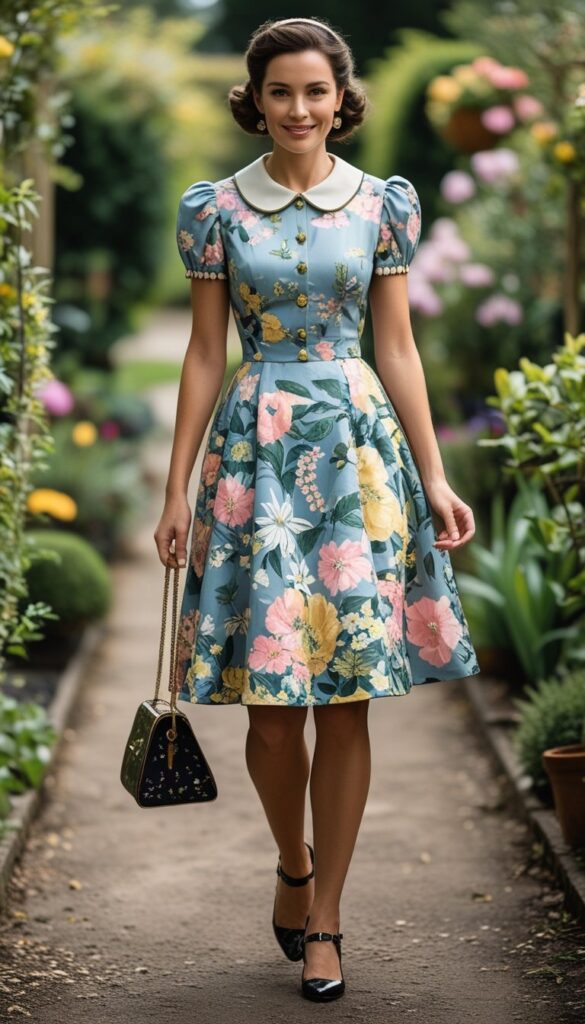
The tea dress was a feminine classic during the 1940s, often featuring small floral prints, modest necklines, and flowing mid-length skirts. The Peter Pan collar added sweetness, while low-heeled pumps ensured comfort. It was perfect for afternoon visits or small gatherings.
Why it works: It’s charming yet understated, offering elegance without extravagance—perfect for an era shaped by restraint.
12. Workwear Overalls with Bandana and Work Boots

As more women joined the workforce, especially in factories, overalls became a common sight. Sturdy denim or cotton twill versions were worn over simple shirts, often with hair tucked into a bandana. Work boots grounded the outfit in practicality.
Why it works: It symbolizes women’s empowerment and resilience while being iconic of wartime labor fashion.
13. Short Wool Coat with Gloves and Cloche Hat
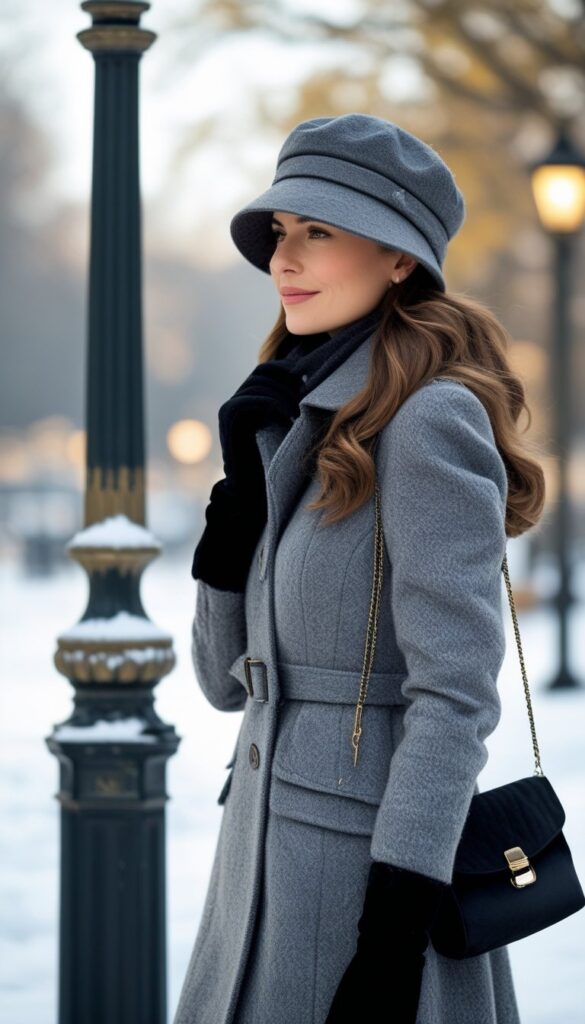
Outerwear in the 1940s emphasized form and function. A short wool coat with structured shoulders paired with dainty gloves and a cloche or brimmed hat created a smart look suitable for winter streets or wartime train platforms.
Why it works: It’s timeless, polished, and adaptable—perfect for modern vintage style or period-inspired layering.
14. Pleated Day Dress with Peep-Toe Shoes
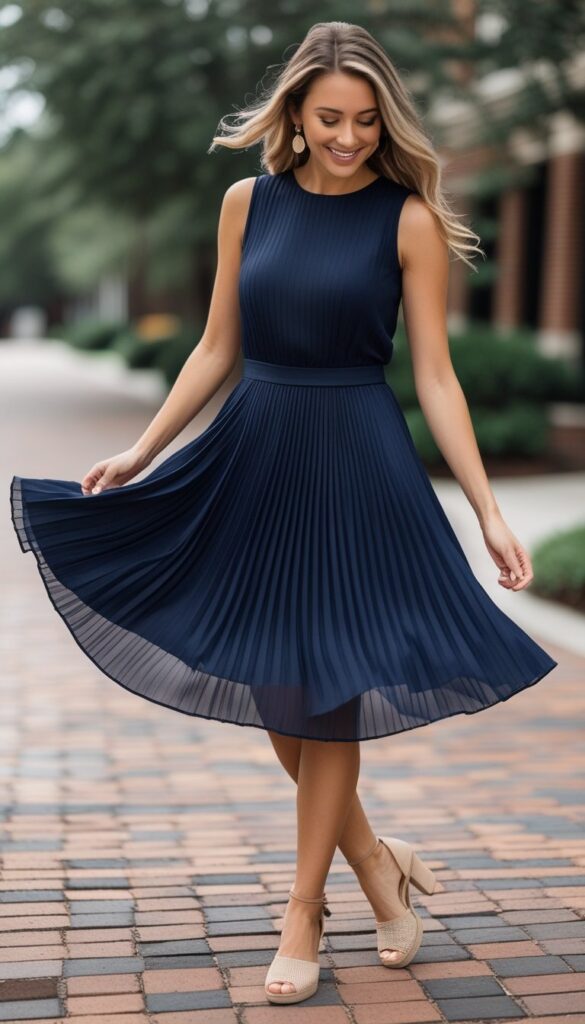
Pleated day dresses made use of minimal fabric while maintaining graceful movement. Often in subdued solids or prints, they hit mid-calf and included small buttons or ruching for detail. Peep-toe heels were a trendy touch when materials allowed.
Why it works: The pleats added dimension without waste, and the entire look emphasized elegance on a budget.
15. Wool Trousers with Vest and Newsboy Cap
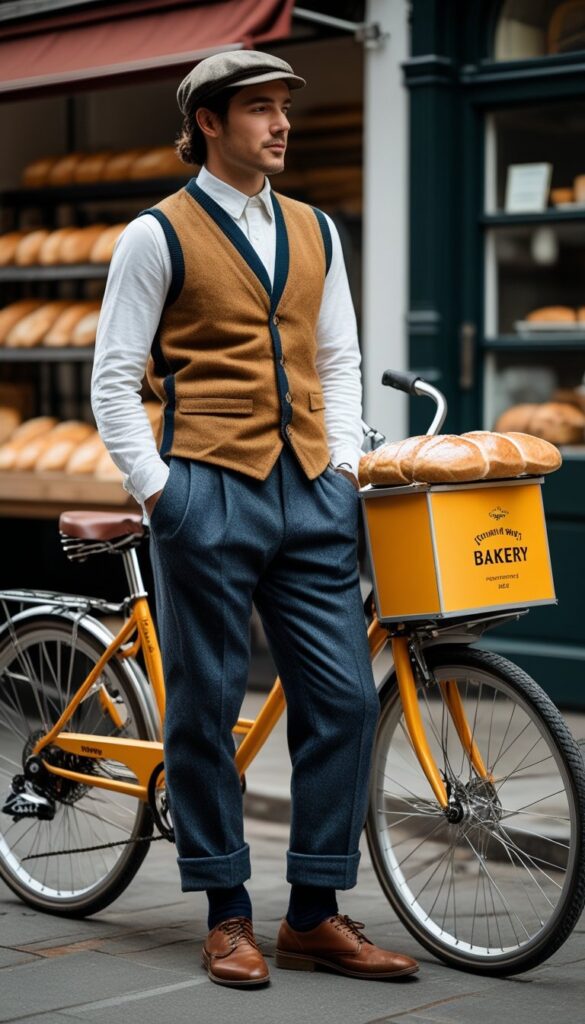
A unisex favorite, especially among younger men and boys, this outfit featured high-waisted wool trousers, a buttoned vest, and a flat newsboy cap. It reflected both utility and modest style and was often paired with suspenders or a tucked-in shirt.
Why it works: It’s rugged, structured, and steeped in 1940s practicality, perfect for cooler months or work settings.


